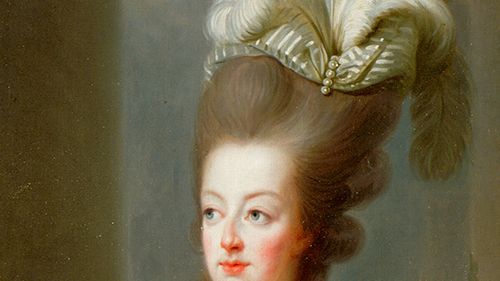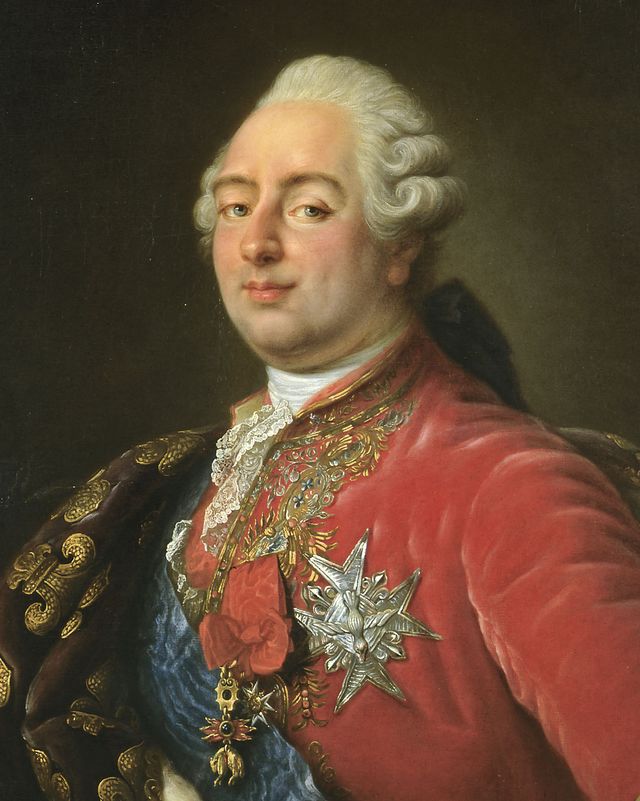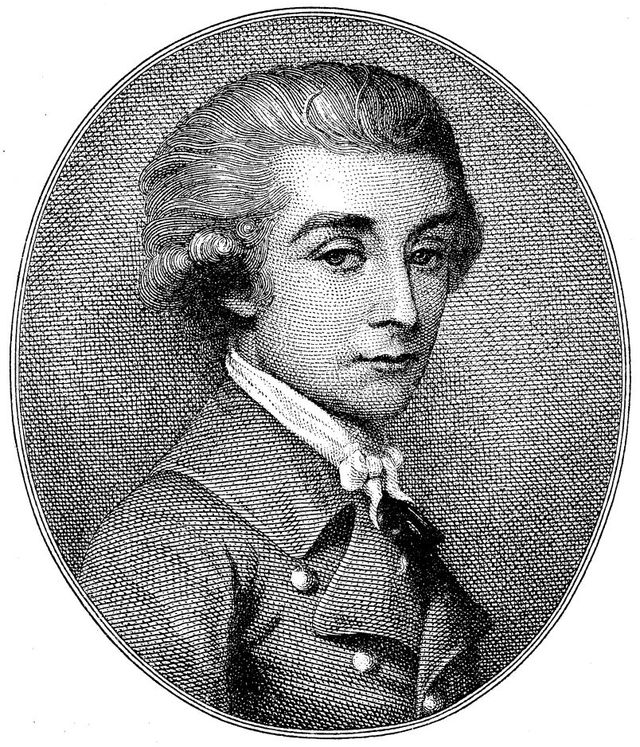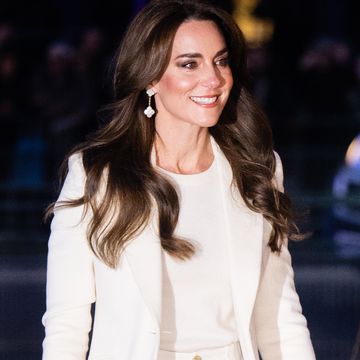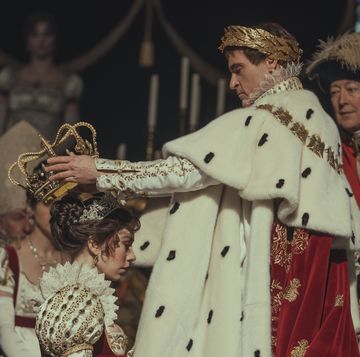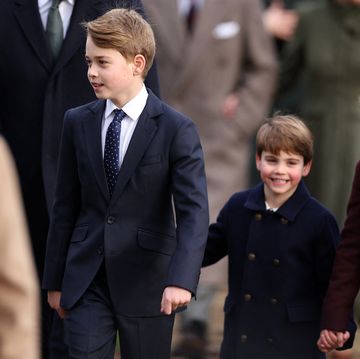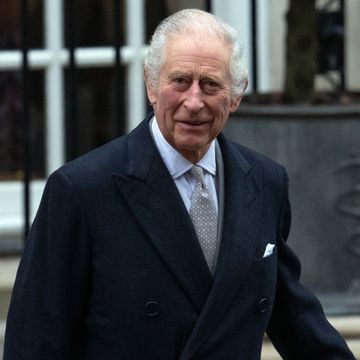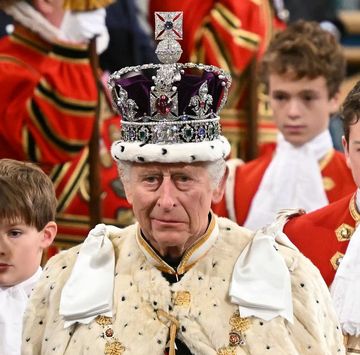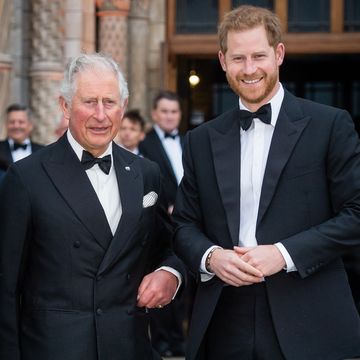1755-1793
Who Was Marie Antoinette?
Marie Antoinette was the last queen of France who helped provoke the popular unrest that led to the French Revolution and to the overthrow of the monarchy in 1792. She became a symbol of the excesses of the monarchy and is often credited with the famous quote “Let them eat cake,” though there is no evidence she actually said it. Marie Antoinette was beheaded nine months after her husband, Louis XVI, by order of the Revolutionary tribunal. She was 37 years old when she died in 1793.
Quick Facts
FULL NAME: Marie Antonia Josepha Joanna
BORN: November 2, 1755
DIED: October 16, 1793
BIRTHPLACE: Vienna, Austria
PARENTS: Maria Theresa and Francis I
SPOUSE: Louis XVI (1770-1793)
CHILDREN: Marie-Thérèse-Charlotte, Louis-Joseph, Louis XVII, and Sophie
ASTROLOGICAL SIGN: Scorpio
Family and Early Life
Maria Antonia Josepha Joanna, better known as Marie Antoinette, was born on November 2, 1755, in Vienna.
Marie Antoinette was the 15th and second to last child of Maria Theresa, empress of Austria, and Holy Roman Emperor Francis I. She lived a relatively carefree childhood. Marie Antoinette’s education was typical of an 18th century aristocratic girl and focused primarily on religious and moral principles, while her brothers studied more academic subject matter.
With the conclusion of the Seven Years’ War in 1763, the preservation of a fragile alliance between Austria and France became a priority for Empress Maria Theresa. Cementing alliances through matrimonial connections was a common practice among European royal families at the time.
Husband Louis XVI
In 1765, Louis, dauphin de France (also known as Louis Ferdinand), died. The son of French monarch Louis XV, his death left the king’s 11-year-old grandson, Louis-Auguste, heir to the French throne. Within months, Marie Antoinette and Louis-Auguste, the future King Louis XVI, were pledged to marry.
Three years later, Louis XV dispatched a tutor to Austria to instruct his grandson’s future wife. The tutor found Marie Antoinette “more intelligent than has been generally supposed,” but added that since “she is rather lazy and extremely frivolous, she is hard to teach.” Marie Antoinette was a child of only 14 years, delicately beautiful, with gray-blue eyes and ash-blonde hair. In May 1770, she set out for France to be married, escorted by 57 carriages, 117 footmen, and 376 horses. Marie Antoinette and Louis-Auguste were married on May 16, 1770.
The young woman didn’t adjust well to a married life for which she was obviously not ready, and her frequent letters home revealed intense homesickness. “Madame, my very dear mother,” she wrote in one letter, “I have not received one of your dear letters without having the tears come to my eyes.” She also bristled at some of the rituals she was expected to perform as a lady of the French royal family. “I put on my rouge and wash my hands in front of the whole world,” she complained, referring to a ritual in which she was required to put on her makeup in front of dozens of courtiers.
When Louis XV died in 1774, Louis-Auguste succeeded him to the French throne as Louis XVI, making Marie Antoinette, at 19 years old, queen of France.
The personalities of Louis XVI and Marie Antoinette couldn’t have been more different. He was introverted, shy, and indecisive, a lover of solitary pleasures such as reading and metalwork; she was vivacious, outgoing, and bold, a social butterfly who loved gambling, partying and extravagant fashions. When the king went to bed before midnight, Marie Antoinette’s nights of partying and carousing had yet to begin. When she woke up just before noon, he had been at work for hours.
Marie Antoinette’s Children
Marie Antoinette had four children, though not right after marrying Louis XVI. In 1777, word had reached Marie Antoinette’s mother that her daughter and Louis XVI hadn’t yet consummated their marriage. So Empress Maria Theresa immediately dispatched her son, Marie Antoinette’s older brother Joseph II, to France to act as a sort of marriage counselor. Whatever his counsel, it apparently worked.
Eight years after her wedding, Marie Antoinette gave birth to her first child, Marie-Thérèse-Charlotte, in 1778. Next came a son and heir, Louis-Joseph, in 1781, followed by two more children, Louis-Charles (born in 1785) and Sophie (born in 1786). Marie Antoinette was a devoted mother, though royal protocol prevented her from handling their day-to-day care.
Tragedy struck the family when Sophie died less than a year after her birth and Louis-Joseph died in 1789 at age 7, just weeks before the storming of the Bastille that would ignite the French Revolution.
Marie-Thérèse and Louis-Charles initially followed their parents into captivity following their arrest in 1789 but were eventually separated from them. Louis-Charles was subjected to abuse and mistreatment (including being forced to give false abuse allegations against his mother), and he died, aged 10, just two years after Marie’s execution. Rumors of his supposed escape from his prisoners led to decades of fictitious “pretenders” who claimed to be the “lost dauphin” or Louis XVII.
Marie-Thérèse, Marie and Louis’ sole surviving child, was finally released after the end of the Reign of Terror and spent an unhappy life moving between France and other European royal courts in exile until her death in 1851 at age 72.
Marie Antoinette’s Nickname
During the 1780s, countless pamphlets accused Marie Antoinette of ignorance, extravagance, and adultery. Some featured salacious cartoons and others dubbed her “Madame Deficit.” At the time, the French government was sliding into financial turmoil, and poor harvests were driving up grain prices across the country, making Marie Antoinette’s fabulously extravagant lifestyle the subject of popular ire.
In 1785, an infamous diamond-necklace scandal permanently tarnished the queen’s reputation. A thief posing as Marie Antoinette had obtained a 647-diamond necklace and smuggled it to London to be sold off in pieces. Although Marie Antoinette was innocent of any involvement, she was, nevertheless, guilty in the eyes of the people.
Refusing to let public criticism alter her behavior, in 1786, Marie Antoinette began building the Hameau de la Reine, an extravagant retreat near the Petit Trianon at Versailles.
"Let Them Eat Cake"
Marie Antoinette is perhaps best known for the quote, “Let them eat cake.” As the story goes, upon hearing that the people had no bread to eat around the start of the French Revolution in 1789, the queen commented “qu’ils mangent de la brioche,” referring to a type of French bread.
However, there is no evidence that Marie Antoinette actually uttered these words, and historians generally agree that such a heartless comment would have been highly uncharacteristic of the French queen. Despite her lavish lifestyle, Marie Antoinette gave to charity and had compassion for her country’s common class.
The remark is generally traced back several decades to a version involving la croûte de pâté, another kind of French pastry. The comment was supposedly made by Marie-Thérèse, a Spanish princess who married King Louis XIV in 1660.
Affair with Axel von Fersen
Louis XVI wasn’t the only man in Marie Antoinette’s life. She likely first met Swedish diplomat Axel von Fersen at a ball at Versailles in 1774, shortly before she became queen, and they became close following his return to France in 1778. He frequently attended the relaxed, private parties Marie Antoinette threw for friends at Versailles’ Petit Trianon castle, and von Fersen became a trusted part of her inner circle.
Their relationship set tongues wagging at the gossipy French court, with some going so far as claiming von Fersen had fathered one of Marie Antoinette’s children. Although many historians have surmised they had a physical relationship, the limited surviving correspondence between the two gives only mention of a deep emotional connection.
The pair were separated in 1780, when von Fersen traveled to America to join French forces fighting on behalf of the colonists in the American Revolution (a position von Fersen obtained thanks, in part, to his royal connections). He was named a Swedish envoy to the French court upon his return in 1784 and was at Versailles with Louis and Marie Antoinette as the earliest events of the French Revolution played out.
The French Revolution
On July 14, 1789, 900 French workers and peasants stormed the Bastille prison to take arms and ammunition, marking the beginning of the French Revolution. On October 6 of that year, a crowd estimated at 10,000 gathered outside the Palace of Versailles and demanded that the king and queen be brought to Paris. At the Tuileries Palace in Paris, the always indecisive Louis XVI acted almost paralyzed, and Marie Antoinette immediately stepped into his place, meeting with advisers and ambassadors and dispatching urgent letters to other European rulers, begging them to help save France’s monarchy.
In a plot hatched primarily by Marie Antoinette and her likely lover Count Axel von Fersen, the royal family attempted to escape France in June 1791, with von Fersen driving the carriage carrying the royal family. They were recognized and recaptured. (Despite von Fersen’s repeated attempts to stage other rescue attempts, he saw Marie Antoinette only once more before her death.) That September, King Louis XVI agreed to uphold a new constitution drafted by the Constituent National Assembly in return for keeping at least his symbolic power.
However, in the summer of 1792, with France at war with Austria and Prussia, the increasingly powerful radical Jacobin leader Maximilien de Robespierre called for the removal of the king. In September 1792, after a month of terrible massacres in Paris, the National Convention abolished the monarchy, declared the establishment of a French Republic, and arrested the king and queen.
In January 1793, the radical new republic placed King Louis XVI on trial, convicted him of treason, and condemned him to death. On January 21, 1793, he was dragged to the guillotine and executed.
Death and Last Words
Marie Antoinette was executed by guillotine on October 16, 1793, in Paris. She was 37 years old when she died.
Earlier that month, just as the infamous and bloody Reign of Terror that claimed tens of thousands of French lives was getting underway, Marie Antoinette was put on trial for treason and theft, as well as a false and disturbing charge of sexual abuse against her own son. After the two-day trial, an all-male jury found Marie Antoinette guilty on all charges.
On the night before her execution, she had written her last letter to her sister-in-law, Elisabeth. “I am calm,” the queen wrote, “as people are whose conscience is clear.” In the moments before her execution, when the priest who was present told her to have courage, Marie Antoinette responded, “Courage? The moment when my ills are going to end is not the moment when courage is going to fail me.”
The queen’s last words were purportedly uttered to her executioner after stepping on his foot in front of the guillotine, offering him an apology, “Pardon, monsieur. I did not do it on purpose.”
The last queen of France has been vilified as the personification of the evils of monarchy. At the same time, Marie Antoinette has also been exalted as a pinnacle of fashion and beauty, with obsessive scholarship on her choices in wardrobe and jewelry and endless speculation about her extramarital love life. Both of these takes on Marie Antoinette’s character demonstrate the tendency, as prevalent today as it was in her own time, to depict her life and death as symbolic of the downfall of European monarchies in the face of global revolution.
As Thomas Jefferson once said, predicting the way Marie Antoinette would be viewed by posterity, “I have ever believed that if there had been no Queen, there would have been no revolution.”
Marie Antoinette Syndrome
Marie Antoinette syndrome is a purported condition where some or all or some of the hair on the scalp suddenly turns white. Rumor has it that the queen’s own hair turned white the night before she was scheduled to be executed at the guillotine, hence the name. Scientists are still working to discover the exact cause of the condition, which might be brought on by severe stress leading to a rare form of alopecia. But they remain uncertain whether it’s medically possible for such a sudden and drastic change to occur so quickly.
Reports of the same mysterious condition have appeared elsewhere in history, most notably, to English scholar and author Sir Thomas More, who ran afoul of King Henry VIII’s efforts to reform the Anglican Church during the English Reformation. The night before his execution in 1535 at the Tower of London, More’s hair reportedly turned white.
Movies about Marie Antoinette
Marie Antoinette has been the subject of numerous plays, books (both fiction and nonfiction), music, and movies.
A 1938 film starred Norma Shearer as the ill-fated queen, with Robert Morley as King Louis XVI and Tyrone Power as her lover, Count Axel von Fersen. Another movie, directed by Sofia Coppolla and released in 2006, starred Kirsten Dunst as Marie Antoinette and Jason Schwartzman as King Louis XVI. Coppola was nominated for a Cannes Film Festival Palme d’Or for her work, and the film won a 2007 Academy Award for Costume Design.
In 2023, a lavish television drama from BBC and Canal+ debuted in the U.S. that depicted Marie Antoinette’s early years at Versailles but which received criticism for its attempts to recast the queen as a feminist icon more fitting for a modern age. Also this year, the movie Chevalier explored the friendship between the legendary French queen and 18th century composer and violin virtuoso Chevalier de Saint-Georges, often known as the “Black Mozart.”
Quotes
- No one understands my ills, nor the terror that fills my breast, who does not know the heart of a mother.
- There is nothing new, except what has been forgotten.
- I put on my rouge and wash my hands in front of the whole world.
- I am calm as people are whose conscience is clear.
- The moment when my ills are going to end is not the moment when courage is going to fail me.
- Dreams weigh nothing.
- Pardon, monsieur. I did not do it on purpose.
Fact Check: We strive for accuracy and fairness. If you see something that doesn’t look right, contact us!..
The Biography.com staff is a team of people-obsessed and news-hungry editors with decades of collective experience. We have worked as daily newspaper reporters, major national magazine editors, and as editors-in-chief of regional media publications. Among our ranks are book authors and award-winning journalists. Our staff also works with freelance writers, researchers, and other contributors to produce the smart, compelling profiles and articles you see on our site. To meet the team, visit our About Us page: https://www.biography.com/about/a43602329/about-us
